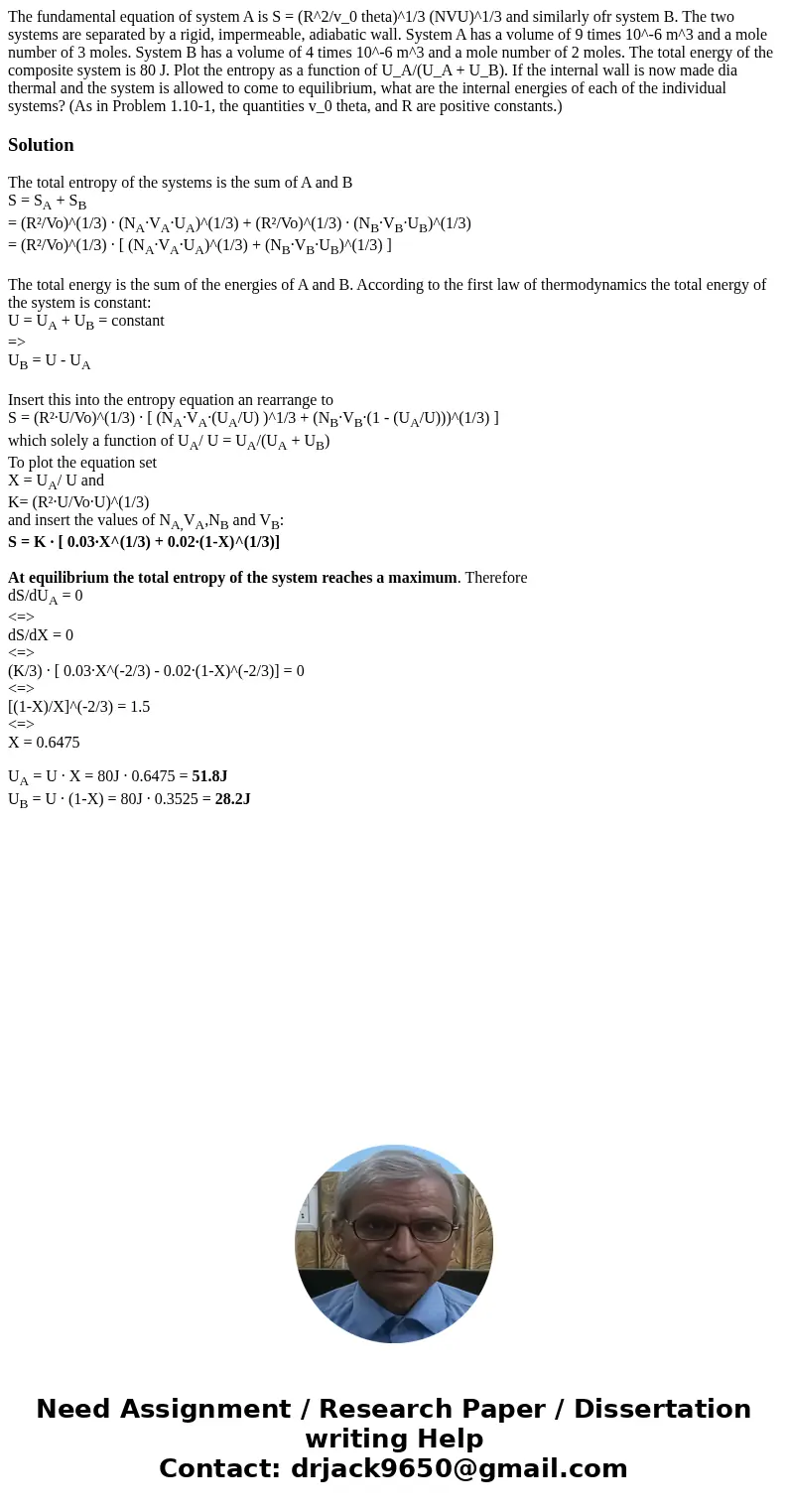The fundamental equation of system A is S R2v0 theta13 NVU1
Solution
The total entropy of the systems is the sum of A and B
S = SA + SB
= (R²/Vo)^(1/3) · (NA·VA·UA)^(1/3) + (R²/Vo)^(1/3) · (NB·VB·UB)^(1/3)
= (R²/Vo)^(1/3) · [ (NA·VA·UA)^(1/3) + (NB·VB·UB)^(1/3) ]
The total energy is the sum of the energies of A and B. According to the first law of thermodynamics the total energy of the system is constant:
U = UA + UB = constant
=>
UB = U - UA
Insert this into the entropy equation an rearrange to
S = (R²·U/Vo)^(1/3) · [ (NA·VA·(UA/U) )^1/3 + (NB·VB·(1 - (UA/U)))^(1/3) ]
which solely a function of UA/ U = UA/(UA + UB)
To plot the equation set
X = UA/ U and
K= (R²·U/Vo·U)^(1/3)
and insert the values of NA,VA,NB and VB:
S = K · [ 0.03·X^(1/3) + 0.02·(1-X)^(1/3)]
At equilibrium the total entropy of the system reaches a maximum. Therefore
dS/dUA = 0
<=>
dS/dX = 0
<=>
(K/3) · [ 0.03·X^(-2/3) - 0.02·(1-X)^(-2/3)] = 0
<=>
[(1-X)/X]^(-2/3) = 1.5
<=>
X = 0.6475
UA = U · X = 80J · 0.6475 = 51.8J
UB = U · (1-X) = 80J · 0.3525 = 28.2J

 Homework Sourse
Homework Sourse